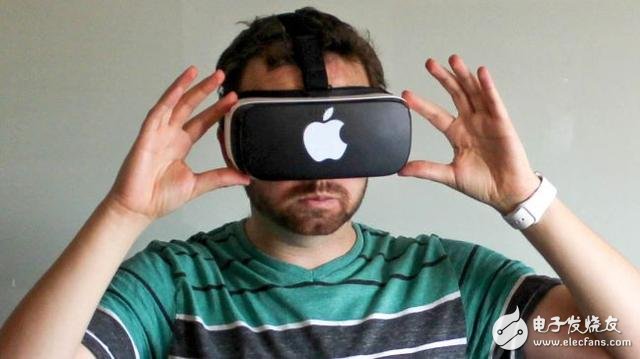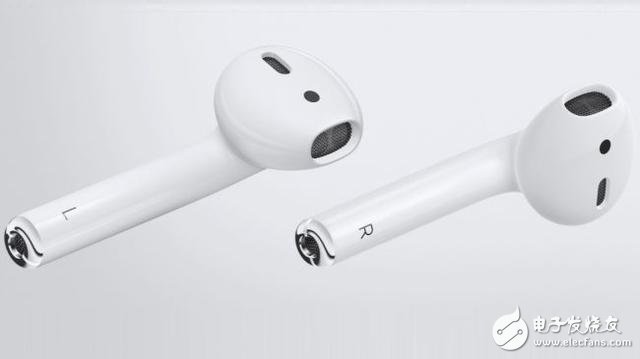Apple devices are currently largely VR-free. Both the Oculus Rift and the HTC Vive don't support the Mac's graphics cards very well, and the iPhone doesn't have accessories like the Samsung Gear VR - except for some Google Cardboard cottages. Virtual reality VR and augmented reality AR are undoubtedly the most popular new technologies. In fact, they are more representative of the future than the mature and industrialized smartphone market.
Sony PS VR will be listed in the middle of this month, forming a three-pronged relationship with Oculus and HTC; Google DayDream is concerned about the mobile VR market, compatible mobile phones and heads are likely to appear in large numbers at the end of this year and early next year; Microsoft's HoloLens, Intel's AR Helmets focus on AR applications, allowing people to touch digital content in reality.

So what about Apple? In fact, Tim Cook has shown interest in VR and AR devices more than once and said they will be the future. Although we don't know when Apple will enter the market, it is certain that Apple is secretly developing its own style of VR/AR devices and platforms. Let's take a look at the related content.
Apple has already paid attention to the VR/AR market?
For technology giants such as Apple, the huge patent reserves are not surprising. In fact, as early as 2008, Apple has applied for compatible mobile phones like Google Glass and Samsung Gear VR, which can turn the iPhone into a display and realize a mobile virtual reality experience.

With the innovation of technology, Apple is also constantly updating its patents. The updated patents for the first display are similar to those of the Oculus Rift. They are fully enclosed and have the effect of automatically adjusting the field of view and vision, while connecting to external devices in a wireless form.
Apple's competitorsAt present, Apple's competitors include desktop VR headsets such as Oculus, HTC, and Sony, mobile VR vendors such as Samsung and Google, and AR vendors such as Microsoft and Intel. The market competition is fierce.

Obviously, Apple is not lack of concepts and technology, but the delay in entering the market is related to its "tunefulness": Apple always hopes to change the user experience through small but essential improvements.
For example, current VR headsets are mostly bulky, wired, and do not completely solve the problem of vertigo; AR devices are similar to Google glasses and even larger, and can not be worn as ordinary sunglasses. Apple should be doing the basic hardware and component improvement work, so that the VR and AR experience can be upgraded.
What will Apple's VR/AR device look like?In fact, Apple has begun to lay out the AR market this year, but not through visual devices, but AirPods.

This redesigned wireless headset can turn on Siri, which, like the sci-fi movie "She", becomes a virtual assistant in the ear, which is clearly a design full of AR potential.
As for the head display, due to the uncertainty of the patent, it is impossible to judge whether Apple will launch a mobile phone-based product or be completely independent. But what is certain is that Apple believes that the current VR/AR devices are not perfect, cumbersome, wired, and weird, which will hinder the development of the market. They are still niche, laboratory-grade devices.
Apple doesn't invent equipment, but it's the trend, and it won't be easy to get into the market until it can make VR/AR devices beautiful like iPods, iPhones, and MacBooks.
Characteristics of cable wire sleeve
· Operating temperature range: -70~+155ºC
· Melt temperature: 250 ºC
· Standard color: Black, White, Grey, Yellow, Blue, Red, Green etc.
1. high temperature resistant (working temperature: -50°c ~ 150°c)
2. high melting point (250°c)
3. high fire resistant performance
4. flexible, abrasive resistance, thermal insulation
5. increased braid density coverage provides higher level of abrasion resistance without losing flexibility
6. treated yarns extinguish quickly and reduces potential flame spread to surrounding components
7. cuts with ordinary scissors without fraying ends.
8. Flammability: UL VW-1 Flame retardant, UV resistant, Anti chemicals and solvents, Light weight and Flexible.
9. Standard color: White, Black, Gray, Red, Yellow, Blue,Pink,Orange,Purple,Remix pattern.
10. Cutting tool: Hot knife
11. Certificate: RoHS, UL, SGS,MSDS.
Functions of cable wire sleeve
To meet the requirement of wear protection in various industrial fields .it expands the diameter to 1.5 times larger than the original size with unique weaving structure.
We have one of the most extensive ranges of insulation products, Expandable Braided Sleeving, cable ties, and accessories on the market, suitable for a wide spectrum of industries, from electrical design and construction companies, to manufacturers of electrical products and building industries. Expandable Braided Sleeves is manufactured from PET, which has great properties of flexibility and strength, plus a good resistance against chemicals, and when used on wire runs, it adds protection and extra insulation.
Cable Wire Sleeve,Cable Braided Sleeve,Expandable Sleeve ,Shrink Wire Insulation Sleeve
Shenzhen Huiyunhai Tech.Co.,Ltd , https://www.hyhbraidedsleeve.com